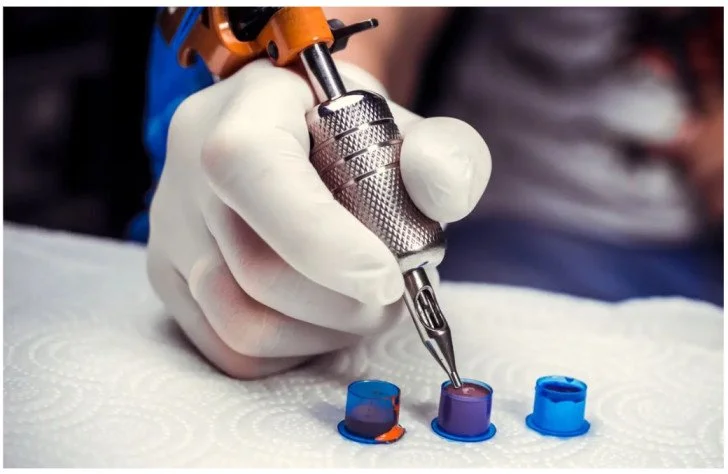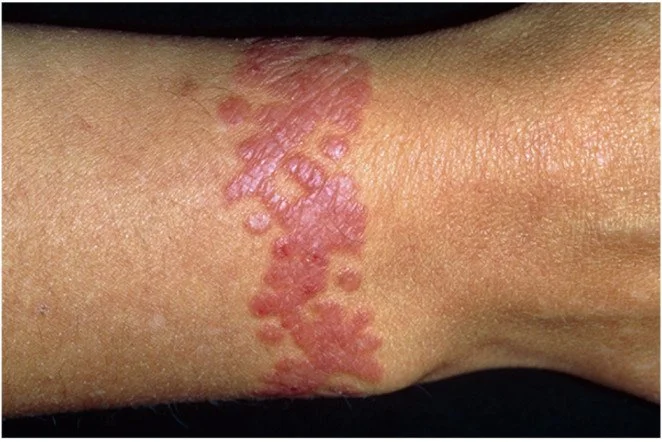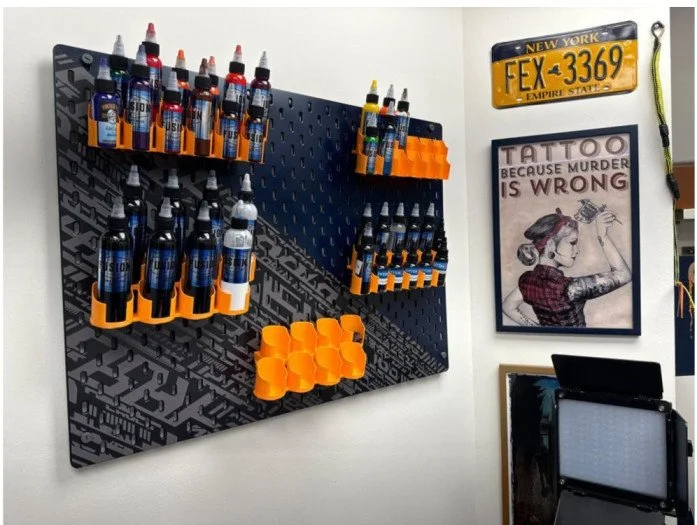Does Tattoo Ink Expire? A Complete Guide to Safety and Quality
For centuries, tattoos have been a highly popular form of self-expression. It is a permanent way to tell your story or honor a memory through your skin. However, as the art form has evolved, so has the technology and science behind the tools used to create it.
While the focus is often on the design and the artist’s skill, one crucial question often goes unasked: Does tattoo ink expire?
This raises some fundamental concerns about the safety and reliability of the tattoo ink. Let’s unpack all the necessary information you need to know about its shelf life and proper use.
Source: Business Insider
Does Tattoo Ink Expire or Spoil Over Time?
Yes, absolutely. Just like with food or medicine, tattoo ink comes with an expiration date printed on the bottle. This date is a manufacturer’s guarantee that the ink will remain sterile, vibrant, and consistent until the specific date.
The shelf life of tattoo ink depends upon the brand and specific ink type. A general rule of thumb is 2 to 5 years for an unopened bottle. However, the clock starts ticking the moment you unseal a bottle. Exposure to air can make it susceptible to contamination, which is why most reputable brands recommend using the contents within 6 to 12 months after opening.
Why Does Tattoo Ink Expire: The Science Behind
Tattoo ink’s stability is a delicate balance that can be upset by various factors. There are different aspects like chemical makeup, exposure to air, or light, which contribute to its eventual expiration. We will take a look at each of these elements.
1. Chemical Composition
Tattoo ink is basically made of two components: the pigment and the carrier solution. Pigments provide the color and can be molecular compounds. For example, an azo dye for a vibrant red or a solid inorganic compound like titanium dioxide for white. The carrier solution helps distribute the pigment and allows it to be applied to the skin. It is a mixture of different ingredients, including purified water, alcohols, and glycerin.
Over time, these delicate components can break down and cause the ink to degrade. A common sign is that the pigment particles start settling at the bottom of the bottle and leave the carrier solution at the top.
2. Contamination
Tattoo ink is highly susceptible to contamination. Even if an ink bottle is new, it can become compromised if handled improperly. For instance, using non-sterile water to dilute the ink or practicing poor hygiene can introduce bacteria, fungi, and other microorganisms.
There is another way in which tattoo ink can become compromised, i.e., cross-contamination. This often happens when an artist’s gloved hand, having touched the client's skin or a used needle, then touches a new, sterile ink bottle or a clean ink cap. The action directly transfers bacteria and other pathogens and compromises the ink’s sterility.
3. Light and Heat Exposure
Exposure to excessive light and heat can significantly damage tattoo ink. Sunlight, specifically its UVB radiation, can cause pigments to break down in a process known as photochemical cleavage. Research has shown that this can destroy the pigment and create decomposition products that are toxic or even carcinogenic.
This is the reason why artists always recommend avoiding sunlight during the tattoo pain healing and aftercare duration. Excessive sunlight can alter the chemical composition of the ink, which poses a potential health risk to the client.
Expired Tattoo Ink Symptoms
Thinking of creating some of the hottest tattoo styles? Better check your ink stash first. Whether you are a professional artist or a client, the health and vibrancy of a tattoo depend entirely on the ink. Here we have listed some major signs that a bottle of tattoo ink has expired or gone bad.
1. The Expiration Date
The biggest red flag is the expiration date printed on the bottle. This is your number one indicator that the ink is no longer guaranteed to be sterile or safe. Using ink past this date, even if it seems fine, can be extremely risky for your client's health and the quality of your work. Always check the date and avoid using any bottle that has passed its prime.
2. Unusual Odor
Most tattoo inks have a mild, chemical, or slightly alcoholic smell, which is perfectly normal. However, a foul, sour or moldy smell is a warning sign. This unpleasant scent indicates that the ink has been contaminated and is no longer sterile. If the ink has an unusual smell, you should discard it immediately to avoid the risk of infection.
3. Change in Consistency
Fresh tattoo ink should have a smooth, uniform consistency that flows easily onto the skin. If you notice it becoming grainy, clumpy, or unusually thick, it is an indication that the ink has been spoiled. On the other hand, it becomes too watery if the pigment separates from the carrier solution and falls to the bottom. Both changes make the ink difficult to use and result in a patchy tattoo.
4. Color Fading or Alteration
Imagine getting a vibrant sunflower tattoo that turns from a bright yellow to a dull, washed-out green within a few days. The same goes for any bold color that was once meant to be bright and lively. When tattoo ink degrades, the pigments break down.
This means the bold, bright colors you expect can become faded, muddy, or even change hue. The loss of pigment integrity directly leads to a dull and lifeless tattoo that fails to match the artist's original vision.
Source: FDA
What Happens if You Use Expired Tattoo Ink
Expired or spoiled ink is more than just a quality risk for the tattoo. It can also have serious consequences for both the artwork and the health of the client. Let’s take a look at some of the serious health hazards and quality issues that come with using compromised ink.
1. Infections
Expired or contaminated ink can become a breeding ground for microorganisms like bacteria and fungi. To make a tattoo, an artist injects the ink into the dermis or second layer of skin. This means the pathogens are introduced directly into the body. The infection can penetrate deeper and cause several health issues.
Common symptoms are redness, swelling, and pain at the tattoo site, as well as pus or other discharge. In more serious cases, the infection can become systemic, leading to broader symptoms such as fever, chills, and fatigue.
2. Skin Damage
Using expired ink can directly harm your skin. The chemicals in expired ink can cause severe allergic reactions such as redness, swelling, itching, and rashes. In some cases, the body’s immune system may reject the spoiled ink pigments and push them out of the skin. This can cause scarring and inflammation in the affected area.
3. Poor Aesthetic Impact
The aesthetic outcome of your tattoo relies heavily on the quality of the ink used. When ink expires, its pigments can break down and alter in composition. This can result in patchy healing and a final product that looks dull and lifeless, failing to match your vision.
The poor aesthetic impact is particularly important if you are considering sleeve tattoo ideas. Lack of color consistency and patchy healing would be highly noticeable. It can compromise the overall look and make the extensive time and cost of the tattoo a regrettable investment.
Source: Etsy
The Right Way: Safe Storage and Handling of Tattoo Ink
So how can you keep your tattoo ink safe? Proper storage and awareness of ink shelf life will help you avoid the complications that can arise from using expired products. Following a few key practices can keep your ink in pristine condition and protect your client’s health.
1. Before Opening
Properly store your unopened tattoo ink to maintain its quality and safety. Always store the bottles in a cool, dark place, away from direct sunlight or any sources of heat. The ideal temperature is typically between 50-77°F (10-25°C). This will prevent the pigments from premature breakdown. Additionally, keep the bottles upright to prevent any potential leaks or spillage.
2. After Opening
Once a bottle of ink has been opened, its shelf life reduces due to exposure to air and potential contaminants. It is always recommended to use a sterile, single-use ink cup for each tattoo to avoid dipping a used needle back into the bottle. After use, tighten the cap securely to prevent air from getting in.
3. General Care Tips
Proper general care for tattoo ink is a habit every artist should develop. It is best to check the expiration date on every bottle, regardless of how new it looks. Always purchase your inks from reputable suppliers to guarantee a quality product that meets safety standards.
To avoid cross-contamination, never dip a used needle or any contaminated tool back into the ink bottle. Finally, if a bottle has expired or has been open for too long, dispose of it properly and never try to salvage it.
Make A Safe Choice for Your Art With Aureo Roma
Getting a new tattoo is always an exciting idea, but one should be really mindful of the tools and products being used. While it's easy to get caught up in the design, the quality of the ink is just as critical.
Expired or contaminated ink can pose serious health and safety hazards. It can lead to everything from infections and skin damage to poor aesthetic outcomes that compromise the final artwork.
This is why, whether you're an artist or a client, it’s important to prioritize safety and quality above all else. At Aureo Roma, our team of artisans and professionals truly understands this commitment. We select only the best, scientifically formulated inks to bring your vision to life; beautifully, safely, and without compromise.



